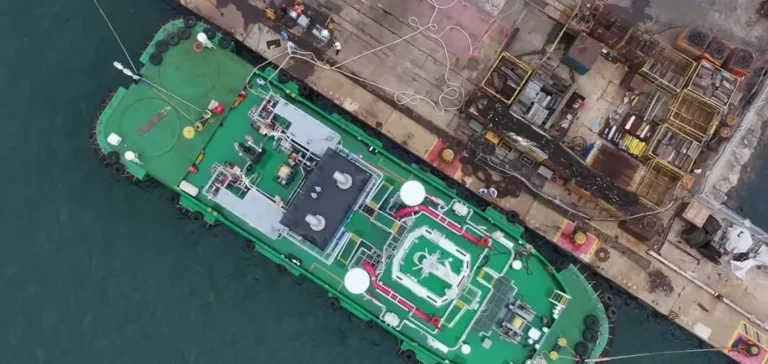The world’s first green ammonia bunkering operation for a harbour vessel was completed at the Dalian terminal in China, initiated by Envision Energy, a company specialising in renewable energy technology solutions. This project relies on the production of green ammonia from the Chifeng hydrogen and ammonia complex, considered the largest of its kind globally. The operation, carried out in partnership with China Shipping & Sinopec Suppliers Co., Limited, enabled the refuelling of a 5,500-horsepower tugboat equipped with an ammonia dual-fuel engine.
A milestone for the global maritime industry
The green ammonia used in this operation comes from a facility entirely powered by renewable energies, integrating wind, solar, and energy storage. This production model combines proprietary electrolysis and synthesis technologies to ensure dynamic coupling between electricity generation and the manufacture of green molecules. The Chifeng project holds ISCC Plus certification, guaranteeing the carbon footprint of its ammonia, as well as a compliance certificate for renewable ammonia delivered by Bureau Veritas.
The established value chain covers all stages, from the production site to delivery and operational use on the vessel. The tugboat features a locally developed dual-fuel engine, enabling an ammonia substitution rate of up to 91%, which significantly reduces the use of fossil fuels. The vessel has been classified as “Ammonia Fuel Tug” by China Classification Society, a first that could guide the evolution of marine propulsion in Asian ports and beyond.
Dalian, new multi-fuel bunkering hub
With this achievement, the port of Dalian becomes the first in the world to simultaneously offer bunkering solutions for biofuel, green methanol, liquefied natural gas (LNG), and green ammonia. This expanded offering aims to meet the new logistical requirements of international maritime transport, as demand for low-emission energy alternatives increases.
The certifications obtained for the production and use of green ammonia, as well as the industrialisation of the supply chain, address a growing need in the global maritime sector. This operation could serve as a model for the deployment of similar infrastructure in other logistics hubs, facilitating the spread of alternative fuels in international freight transport.
The port of Dalian is now established as a regional platform for green energy bunkering, while the development of the green ammonia sector continues to attract attention from maritime industry players.






















